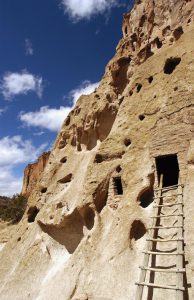
(NewsUSA) — Most Americans believe that before Europeans settled the New World, the continents were largely uninhabited. But when Columbus arrived in the Americas in 1492 there were at least 56 million people living here.
Over 90 percent of the indigenous population was decimated within two generations from disease and war. But the Native American “Indians” left behind over 200,000 incredible pyramid-shaped mounds, complex earthworks (the largest in the world) and walled cities. Today, fewer than 1,000 major mound sites remain.
“America’s Mound Builders created massive earth formations and mounds, and Native American earthworks are actually the biggest and most complex in the world,” said Dr. Greg Little, author of “The Illustrated Encyclopedia of Native American Mounds & Earthworks.” “It’s an archaeological treasure that goes largely unrecognized by the public. One mound complex in Illinois has a pyramid mound over 110 feet high, and its base is larger than the Great Pyramid in Egypt.
“There’s a mystery there,” Little added. “There is a massive stone chamber inside it that has never been excavated.”
The oldest known mound in the U.S. is in Louisiana, dating back to 3,700 B.C., but all along the Atlantic coast are massive shell mound complexes nearly as old.
“It’s highly likely that there are older mounds hidden in shallow water along the coast that were inundated at the end of the last Ice Age,” Little said. “The Native Americans were building pyramid-shaped mounds more than a thousand years before the Egyptians were, and they can be found in nearly every state.”
In today’s economy Little says that people should consider family vacation trips to the larger archaeological parks and museums that have been established at these major mound sites. Most of these parks and museums have a nominal charge or none at all.
“It’s a way to engage children in our lost or forgotten history and is a great way to teach children about indigenous cultures. Almost every state has a couple major sites,” Little added.
For more information, visit www.apmagazine.info.